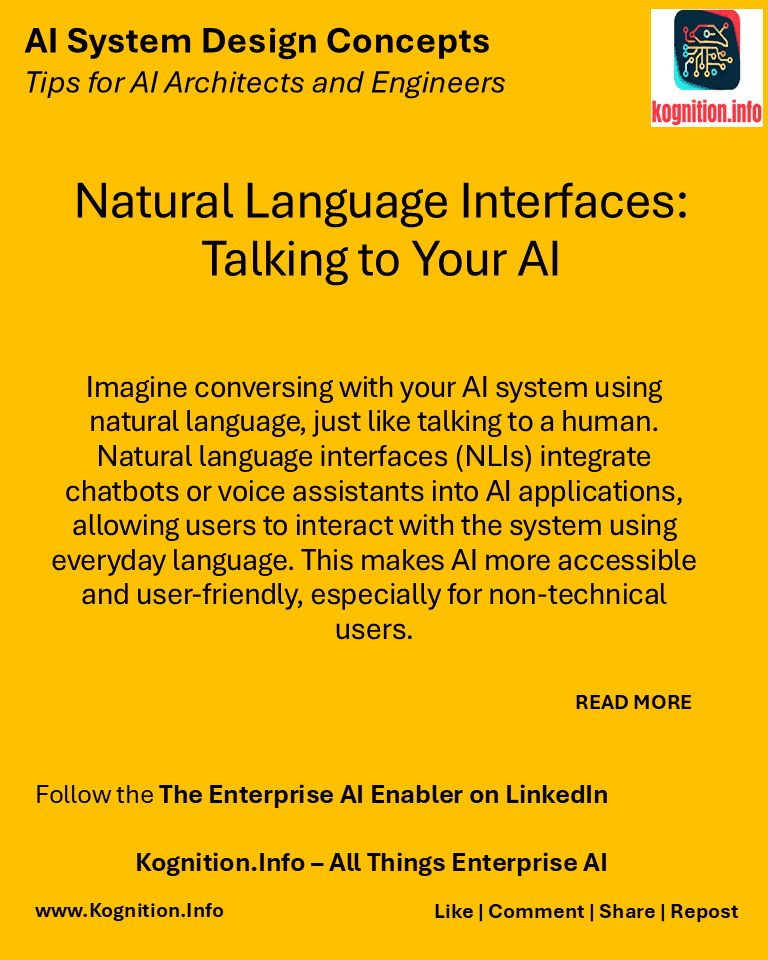
Imagine conversing with your AI system using natural language, just like talking to a human. Natural language interfaces (NLIs) integrate chatbots or voice assistants into AI applications, allowing users to interact with the system using everyday language. This makes AI more accessible and user-friendly, especially for non-technical users.
Use cases:
- AI-powered customer support: Providing instant answers to customer questions and resolving issues through chatbots.
- Voice-controlled AI assistants: Enabling users to interact with AI systems through voice commands, such as asking questions or controlling smart home devices.
- Accessible data exploration: Allowing users to query and analyze data using natural language.
How?
- Choose an NLI platform: Select a platform like Dialogflow, Rasa, or Amazon Lex to build your chatbot or voice assistant.
- Design conversational flows: Define the different paths a conversation can take and the responses the AI should provide.
- Train the NLI model: Train the model on a dataset of conversations to understand user intent and provide relevant responses.
- Integrate with your AI system: Connect the NLI to your AI models and data sources to provide accurate and informative responses.
Benefits:
- Improved user experience: Makes AI more accessible and user-friendly.
- Increased engagement: Encourages user interaction and engagement with the AI system.
- Efficiency: Automates tasks and provides instant responses, saving time and resources.
Potential pitfalls:
- Natural language understanding: NLIs may struggle with understanding complex or ambiguous language.
- Maintaining conversational context: Keeping track of the conversation history and context can be challenging.
- Handling unexpected inputs: NLIs need to be robust to unexpected user inputs and questions.
